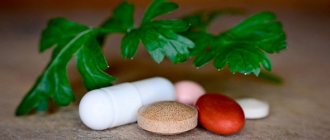- Symptoms of rotavirus
- What happens in the body
- How does infection occur?
- Treatment of rotavirus
- Nutrition
- Prevention
- Is there immunity to rotavirus?
Rotavirus is a virus that affects the gastrointestinal tract.
Rotavirus was first discovered as a pathogen in 1973, and since that time it has been actively combated. In so-called “third world countries,” rotavirus infection is one of the main causes of child mortality. The disease caused by rotavirus infection is called rotavirus gastroenteritis, rotavirosis or “intestinal flu”.
Rotavirus infection - what is it?
Rotavirus is the main cause of acute gastroenteritis in children under 5 years of age. In developed countries where rotavirus vaccines are available, the infection is less common than in undeveloped countries, where it continues to be a leading cause of life-threatening diarrhea in infants and children under 5 years of age. Symptoms of rotavirus include:
- profuse diarrhea,
- vomiting
- fever,
- malaise,
- in rare cases, neurological signs: seizures, encephalitis or encephalopathy.
The most common symptoms are diarrhea and vomiting, leading to significant dehydration.
Etiology
Transmission of rotavirus mainly occurs through the fecal-oral route.
In addition, spread can occur through contaminated surfaces, by touch, and sometimes through food and water. Rotavirus is shed in large quantities in the stool during episodes of diarrhea. Relatively few virions are required to cause disease. Research has shown that almost all children under the age of 5 will sooner or later be infected with rotavirus. Older people, especially those in long-term care facilities, and immunocompromised patients of any age are also susceptible to infection with severe symptoms. In temperate climates, rotavirus infections are seasonal; their frequency peaks in the winter months. Some individuals may become reinfected with rotavirus several times during their lifetime, most likely with different serotypes. The development of natural immunity over time reduces susceptibility to rotavirus and the severity of the disease, so healthy adults rarely suffer any symptoms.
Nutrition
Rotavirus infection requires a competent approach to nutrition. If the baby is sick, then breastfeeding can be continued, but breastfeeding should be given 1-2 times a day. The remaining feedings are carried out with a mixture without lactose. This component of dairy products should be excluded from the menu, as it increases the manifestation of diarrhea.
Older children are given liquid porridge with water, weak chicken broth, and jelly. If a child does not want to eat, you should not force feed him. To restore intestinal microflora, probiotics in capsules are included in the diet.
Pathogenesis of rotavirus infection
Rotaviruses replicate in mature enterocytes throughout the lumen of the small intestine. This results in movement of the osmotically active bolus into the large intestine, which subsequently leads to impaired water reabsorption in the large intestine, which in turn causes the typical watery diarrhea observed with rotavirus infections. Another possible cause of diarrhea caused by rotavirus includes increased intestinal motility. In addition, infection may result in decreased intestinal absorption of sodium and glucose and decreased levels of intestinal lactase, alkaline phosphatase, and sucrase activity. Up to two thirds of children with severe rotavirus gastroenteritis have rotavirus antigen present in their serum (antigenemia). Cellular immunity likely plays a role in protection and recovery from infection.
Treatment of rotavirus
To make a diagnosis, it is necessary to conduct a stool analysis, which can be used to determine the presence or absence of an antigen to the pathogen.
There are no drugs that can destroy rotavirus. For rotavirosis, treatment is symptomatic. It is aimed at preventing and eliminating dehydration. For these purposes, ready-made preparations such as activated carbon or home remedies are used. At the pharmacy you can purchase drugs that restore water and electrolyte balance, such as glucose bufus. If the child has pain and spasms, you can give an antispasmodic. Drugs that restore intestinal flora, adsorbents and antidiarrheals will help support the body during intestinal disorders.
It is worth lowering the temperature if it exceeds 38 C°. This indicator leads to the death of the pathogen. Suppositories can be used to reduce fever in young children. If the child is over one and a half years old, paracetamol is allowed.
Symptoms
The incubation period for rotavirus is 1 to 3 days, after which symptoms appear suddenly.
They are almost identical to the symptoms of other gastrointestinal infections, but rotavirus infections tend to be more severe. The most common symptoms are fever, diarrhea and vomiting. Among infected patients, symptoms vary from short-term mild diarrhea to severe diarrhea with fever and vomiting. Symptoms are most pronounced in patients whose first infection occurs after 3 months of life. With rotavirus infection, vomiting often occurs initially, followed by watery diarrhea. Fever is found in approximately 33% of infected patients, and the temperature can exceed 39 degrees. The duration of the disease ranges from 5 to 7 days from onset to complete disappearance of symptoms. The examination results, as a rule, do not allow one to clearly differentiate rotavirus from other pathogens that affect the gastrointestinal tract. In addition to the symptoms mentioned above, abdominal cramps, fatigue, and signs of dehydration such as dry mucous membranes, tachycardia, and decreased urine output may occur. Rotavirus infection in adults is usually asymptomatic, but can cause diarrhea.
Symptoms of dehydration include:
- Dry mouth and throat
- Urinating less frequently than usual
- Dizziness when standing up
- Children lack tears when crying
Symptoms of rotavirus
Children of infants, preschool and primary school age are susceptible to the disease. Adults get sick less often, although the infection can affect the body regardless of age. The disease is most dangerous for infants and children under 2-3 years of age. The symptoms of the disease are typical for gastrointestinal pathologies:
- stomach ache;
- nausea that progresses to vomiting;
- temperature rise to 38-39 C°;
- loss of appetite, general malaise.
The most important sign of infection is severe diarrhea. The discharge is watery, yellowish in color and has a sour odor. The child feels sick even on an empty stomach and refuses to eat. Against the background of infection, redness of the mucous membrane of the eyes and swelling of the palate may be observed. A dry cough and enlarged lymph nodes in the neck may also appear. With the disease, persistent flatulence is observed: bloating, rumbling, cramps.
Signs of infection appear the very next day, but in some cases the virus may not manifest itself for up to five days.
In adults, the symptoms of the disease are similar, but the disease manifests itself less clearly. One-time diarrhea and a short-term increase in temperature may occur.
In children, the disease lasts from four to seven days, after which clinical manifestations decrease. You should know that the virus is easily transmitted from person to person. Even if an adult family member is sick, he must follow safety measures so as not to infect others.
Classification and stages of development of rotavirus infection
Currently, ten different rotavirus species have been classified (A–J).
Rotavirus species A are the most common cause of childhood infections, with species B and C also causing a smaller but significant percentage of infections worldwide. Six strains of rotavirus species A typically account for >90% of globally circulating rotaviruses. There are three forms of rotavirus infection: mild, moderate and severe.
- In the mild stage, the symptoms are unclear and there are no signs of dehydration.
- In moderate severity, at least two of the three typical symptoms are present, and grade 1 or 2 dehydration is also observed.
- With severe development of the disease, a semi-fainting state, tachycardia, and a drop in pressure are characteristic.
Complications of rotavirus infection
Rotavirus infection in infants and young children can lead to severe diarrhea, dehydration, electrolyte imbalance, and metabolic acidosis. Immunocompromised children may suffer from severe or long-lasting rotavirus gastroenteritis and may have signs of emerging abnormalities in many organ systems, especially the kidneys and liver. Neurological complications (convulsions, transient loss of consciousness, encephalopathy) are the most common extraintestinal manifestations of gastroenteritis. If left untreated, rotavirus can cause severe fluid and electrolyte imbalances. There is evidence of the development of septic shock and endocarditis as a result of the disease.
Features of therapy
Mild rotavirus infection in adolescents and adults does not require special therapy and involves the use of enterosorbents and plenty of fluids. Usually these measures are sufficient to relieve pathological symptoms. Subsequently, the disease disappears on its own.
We recommend: What are the features of the diet for celiac disease?
Moderate and severe forms of the infectious process require mandatory treatment in a hospital setting . According to WHO, 500 children die every year from rotavirus infection in the absence of adequate treatment and increasing dehydration.
Treatment for rotavirus in children includes:
- antipyretics;
- rehydration drugs;
- enterosorbents;
- immunomodulators and antiviral drugs.
If necessary, treatment with probiotics, enzymes, vitamin complexes, and intravenous saline solutions is prescribed.
Limitations when treating children
The main mistake parents make is self-treatment with antibacterial drugs due to the similarity of the clinical picture with some infectious and inflammatory processes.
Today, antibiotics are dispensed from pharmacies by prescription, but this does not prevent one from starting independent antibiotic therapy. Rotavirus infection is not a bacterial infection .
Antibiotics are not only useless here: they worsen the course of the disease and suppress the immune system. Antibiotic therapy is prescribed only by a doctor when secondary bacterial complications occur. This often happens on the 4-5th day of the disease; according to the results of a blood test, a shift in the leukocyte formula to the left is noted. Other restrictions relate to food . Flour, fermented milk and dairy products, sweets, carbonated water, sweet fruit drinks, and syrups are prohibited. A lactic and sweet environment promotes the spread of the pathological process, intensifies symptoms, and leads to complications. Drinking plenty of fluids and rehydration solutions are recommended.
The role of vaccination
Vaccination significantly facilitates the course of repeated viral infectious processes and increases the body’s resistance to various types of viruses of the genus Rotavirus. Vaccination is given to children at 2-3 months of age, however, with an individual vaccination schedule, vaccination is possible according to doctor’s indications. After the first vaccination, revaccination is required several months later.
Vaccinations are also indicated for adults, especially against the background of reduced immunity , autoimmune pathologies, and before planning pregnancy in women. Vaccination can reduce the intensity of symptoms and the risks of complications associated with rotavirus infection.
Laboratory diagnosis of rotavirus infection
Rotavirus is clinically indistinguishable from diarrheal diseases caused by other gastrointestinal pathogens, such as noroviruses, enteric adenoviruses, astroviruses, E. coli, and salmonella.
Laboratory testing is required to confirm rotavirus. Rotavirus can be detected in stool samples from children with gastroenteritis using several methods, including electron microscopy, electrophoresis, antigen detection by enzyme-linked immunosorbent assay or immunochromatography, reverse transcription-polymerase chain reaction (RT-PCR), and virus isolation. Large numbers of rotavirus particles are excreted in the feces during the acute phase of infection. RT-PCR allows genotyping of viral isolates, which is becoming important in epidemiological studies.
Other indicators of rotavirus gastroenteritis may include the presence of acid-reducing agents in the stool and low serum bicarbonate levels. In addition, abnormal enzyme levels have been observed in children with rotavirus disease, which may be associated with vomiting, dehydration, or non-intestinal pathologies associated with rotavirus: for example, mildly elevated blood levels of alanine aminotransferase (ALT) and aspartate aminotransferase (AST) may sometimes be observed during rotavirus infection and may be associated with mild rotavirus-induced hepatitis.
The peak amount of virus in stool is observed 3-5 days after the onset of symptoms. The virus is cleared from the body of an infected person within a few days after the acute phase of infection. Specimens collected 8 or more days after symptom onset may not contain enough rotavirus antigen to produce a positive test result.
Get tested for rotavirus: 10.522 Rotavirus
Is there immunity to rotavirus?
“Stomach flu” is an unpleasant and serious illness. Many people are interested in how long immunity lasts after an illness. This depends on the age of the patient and the type of infection. It has been proven that most adults develop natural immunity to the disease, so you should not expect re-infection after a while.
For children the situation is different. Within a month, a child can become infected again if he encounters a rotavirus infection. You should know that the Rotavirus family includes not one, but several viruses that affect the gastrointestinal tract. This means that after recovery it is important to strengthen safety measures and eliminate the factors leading to infection.
In November 2022, a group of Belgian scientists released the results of a study that confirmed the presence of a hereditary predisposition to rotavirus in some people due to gene mutations. Such patients are more susceptible to the disease and have a hard time tolerating it, which increases the risk of an unfavorable outcome. To date, a vaccine against rotavirus has been developed, which forms long-term immunity to infection. Unlike most vaccinations, the vaccine is administered orally, meaning it is taken by mouth. Vaccination can begin from 6 weeks of age, which helps protect the most vulnerable category of patients.
Prevention
Treatment for rotavirus infection is aimed at relieving symptoms and treating and preventing associated dehydration. Today, the rotavirus vaccine RotaTek is available in Russia. It is not mandatory, but pediatricians strongly recommend it for the formation of stable immunity to different types of rotavirus. Do not forget about simple rules of personal hygiene, especially in places where there is an increased risk of the spread of rotavirus infection. The risk of rotavirus infection is especially high in summer at seaside resorts, where high air temperatures and a large number of vacationers contribute to its rapid spread. During your vacation, you must thoroughly wash vegetables and fruits, properly heat food, do not store perishable foods for a long time, avoid getting water from the sea and pool into your mouth and nose, try to drink clean water and wash your hands after visiting the beach.
Is it possible to get sick again?
A child can get sick again within a few months after suffering from rotavirus , especially if he is at risk: weak immunity, reduced weight, complicated clinical history of the gastrointestinal tract. After the first case, the second or third is easier to bear. If one episode of the disease occurs in childhood, often the second occurs much later, years later.
After what time a relapse occurs depends on the general condition of the patient, age, heredity, and clinical history. Some children do not suffer from rotavirus infection at all or tolerate it adequately , which is due to the strength of the immune system and good health.
Important! At risk are premature babies with chronically decreased immunity due to various diseases of the gastrointestinal tract, life support and respiratory tract.
List of sources
- Vasiliev B.Ya., Vasilyeva R.I., Lobzin Yu.V. Acute intestinal diseases. Rotaviruses and rotavirus infection. — Lan, - 2000
- Clinical recommendations (treatment protocol) for providing medical care to children with rotavirus infection / ed. Yu. V. Lobzina. - SPb.: NIIDI, 2013.
- Union of Pediatricians of Russia. Vaccinal prevention of rotavirus infection in children. Clinical recommendations. — 2022.
- Sue E. Crawford, Sasirekha Ramani, Jacqueline E. Tate and others. Rotavirus infection // Nature, Nov. 2017
- https://pubmed.ncbi.nlm.nih.gov/26004648/
- https://www.medicinenet.com/rotavirus/article.htm
- https://www.nhs.uk/conditions/vaccinations/rotavirus-vaccine/
Prevention of rotavirus in children
When confronted with rotavirus, the maximum level of immune defense does not develop immediately. In order for post-infectious immunity to be formed, 3 consecutive “meetings” with rotavirus are needed, and there should not be long intervals between episodes of the disease3. The fact is that rotaviruses are a heterogeneous group2 and there are different strains (subspecies) of the pathogen, which can cause repeated infections3.
Immunity plays a special role in protecting against subsequent infections with rotavirus3. Therefore, additional preventive measures should be taken in immunocompromised children3,6.
Rotavirus can survive on objects from 10 days to a month, in tap water for 2 months and does not die even after repeated freezing11. Therefore, in order to reduce the risk of infection, the following sanitary and hygienic rules must be strictly observed:
- avoid contact with patients with gastrointestinal symptoms11;
- wash your hands with soap and water more often and for at least a minute and treat them with an alcohol-containing skin antiseptic11;
- thoroughly wash and pour boiling water over vegetables and fruits - rotavirus can survive on them for up to 10 days11;
- Boil or disinfect baby pacifiers, pacifiers, bottles and other utensils in hot water, treat toys with steam (the pathogen dies at a temperature of 70°C for 10 minutes, and at 80°C for 1 minute)11.
For specific prevention of rotavirus infection in children, special vaccines have been developed and used. Vaccination against rotavirus is included in the National Calendar of Preventive Vaccinations of the Russian Federation and the Calendar of Preventive Vaccinations according to indications3.
Up to contents









